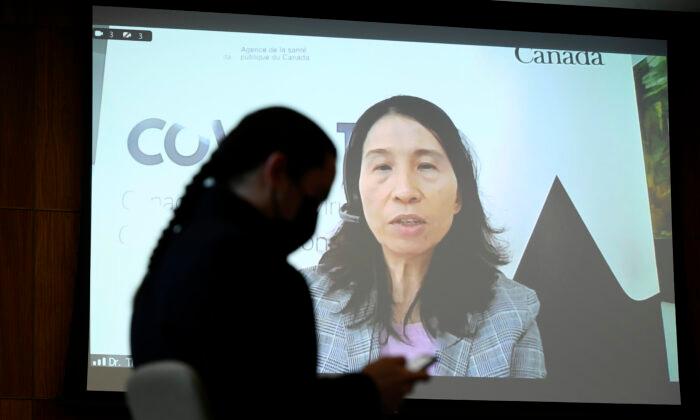The Omicron wave in Canada has likely peaked, says Canada’s chief public health officer Dr. Theresa Tam.
“In the week since the modelling update, there are early indications that infections may have peaked at the national level, including daily case counts, test positivity, Rt or effective reproduction number, and wastewater surveillance trends,” she said.
Tam said that on a national level, the average daily case count has decreased by 28 percent compared to the previous week. But she cautioned that the figure could be an “underestimation” since current lab testing couldn’t keep pace with the Omicron spread.
With the seven-day average of daily cases at almost 27,000 and test positivity of over 22 percent, the chief public health officer added that COVID-19 “remains widespread” in Canada.
She noted that while the modelling suggested Canada may have passed the Omicron peak, daily hospitalizations and intensive care admissions are still “rising steeply,” and many hospitals across the country are under “intense strain.”
“There are many experts in the world trying to work out this question,” she said. “I don’t think … [this is] necessarily the scenario, but it is a possible scenario, so I think we need to prepare for different potential futures.”
When asked for her thoughts regarding the lifting of vaccine mandates and passports, Tam said the goal of public health is to strike a balance between reducing severe illness and mortality as well as reducing societal disruption.
“There is no doubt that nobody wants to have all these restrictive measures anymore, and Omicron may or may not have put us one step toward that new reality,'' she said.
“We need to plan for the different scenarios and just be ready for a time of emergence of new variants. But we’ve got to move on and see how we can make our societal functions closer to what they were before the pandemic.”





